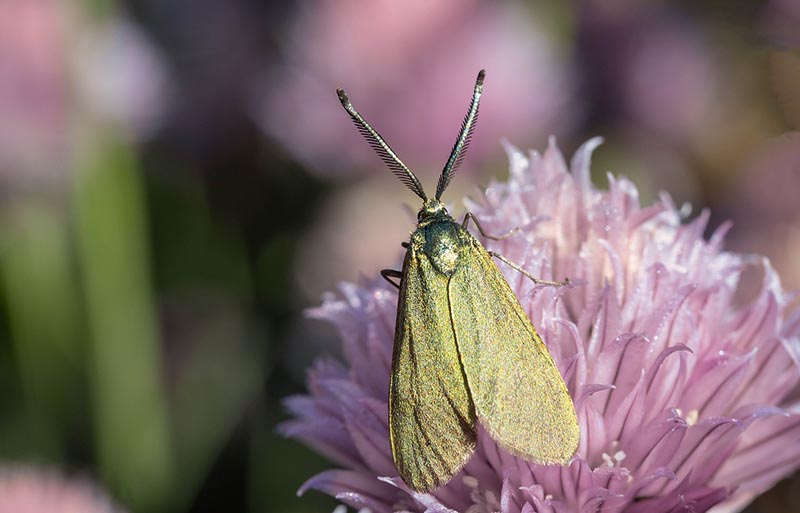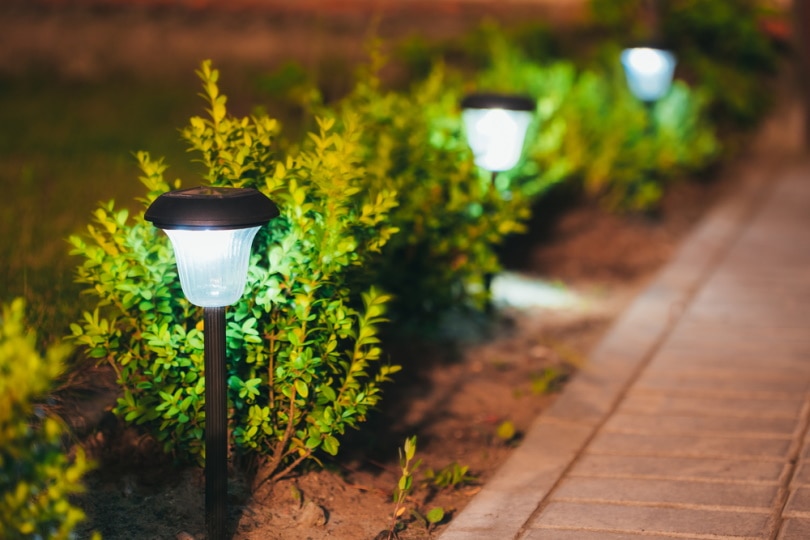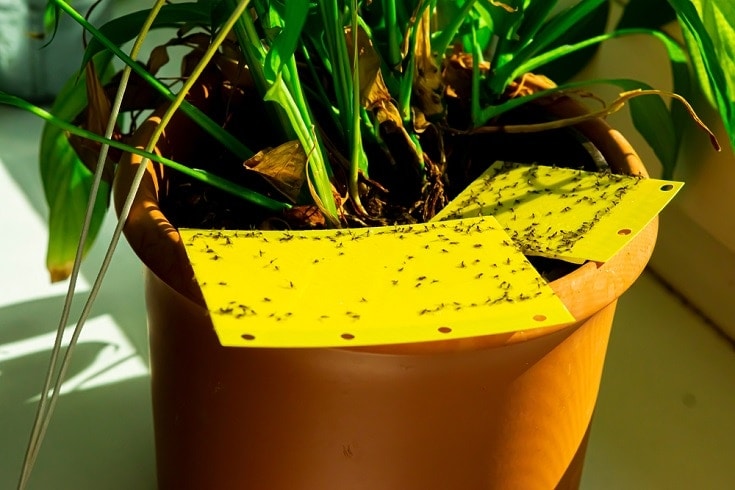How to Get Rid of Moths in Your Yard: 9 Methods That Work
-
Pete Ortiz
- Last updated:

Moths are beneficial insects to have in your garden. They are active at night when they continuously pollinate your plants. Moths are a great addition to daytime pollinators giving you an extra layer of pollination. So why would anyone want to get rid of moths from their yard?
While moths themselves are not harmful to your lawn and garden, their children are. Moths reproduce and will spawn caterpillars in the area where they frequent, and caterpillars are able to destroy a lawn and garden. Moths can also be annoying to have around. They can fly into your face, congregate around your lights, and they can fill up window sills and window screens.
There are plenty of different methods for reducing the number of moths in your yard, whatever the reason for wanting the moths gone. From simple traps to full lawn treatments, there are options on here that will work for you. Here are nine effective methods for getting rid of moths from your yard.
The 9 Methods to Get Rid of Moths in Your Yard
1. Install a Bug Zapper

There is an old saying that compares someone’s behavior like a moth to flame. This is a popular saying because moths are extremely sensitive to light. They will flock to a bright source of light after dark with near perfect accuracy. That makes moths extremely easy to handle with a simple bug zapper. If you notice many moths flying around a certain part of your yard you can install a bug zapper to attract and zap the insects.
Since moths are so sensitive to light, they will flock to the bug zapper in large numbers and die. Bug zappers are inexpensive, easy to install and are not too intrusive. The consistent use of a bug zapper can go a long way to reducing the moth population over a season which in turn will reduce the number of young that a moth will produce in your yard.
2. Burn Citronella
Moths are similar to mosquitoes in that they hate the smell of citronella. One of the easiest and most effective methods of moth removal is to burn citronella outside after dark. There are simple citronella candles that can be used to infuse the air with the smells that moths hate. You can also buy a citronella diffuser that runs on its own around your house. If you do not want to deal with lighting a candle every day or setting up a diffuser, you can also plant citronella plants in your garden that will naturally give off the oils and smells that moths despise.
3. Turn Off Outdoor Lights Near the Garden

One thing you can try is turning off any outdoor lights that you may have. Outdoor lights attract all sorts of bugs, including large numbers of moths. Turning off the porch light and making sure that you do not have any bright lights around your garden will help reduce the number of moths. If moths are not attracted to your yard, there is a likelihood that they will be attracted to someone else’s. This method does not have a super high rate of success for people who have an entrenched moth population, but it does work for people who are annoyed by the large number of transitory moths stopping by after dark.
4. Put Up Barricades to Block Moths
Moths want to eat nectar and pollen from your plants. If you construct simple barriers to block the moths from reaching your plants, you will deprive them of an easy source of food, which will usually cause them to move on and seek greener pastures. You can use tomato cages to create barriers around your plants to keep the moths away. Tomato cages wrapped in mosquito netting or screen will allow your plants to continue to get sunlight and water to survive while blocking access to them by intrepid insects.
You can also hang dangling string or twine around your garden to disrupt moths’ flight paths and redirect them away from your plants. This is a simple and effective method that will help remove the moths from your yard without having to kill them, use any sort of chemicals, or change your nightly habits.
5. Install Moth Traps

Another way to get rid of moths in your yard is to buy or create traps. Moth traps work by attracting moths and then trapping them either inside a bag or in a pool of water. Once the moths enter the trap, they cannot escape, or they die. Traps are noninvasive, do not affect other plants or animals, are cheap to put up, and do not use any sort of chemicals to be effective. There are various different types of traps that can be built at home from cheap materials or purchased from a local garden center. Choose the option that is best for you.
6. Treat Your Lawn
If you want a surefire method that will kill a large number of moths and caterpillars, you can treat your lawn with an insecticide. There are products you can purchase from your local hardware store that can be sprayed or sprinkled onto your lawn to kill any insects hiding in the grass. A lawn treatment will kill large numbers of insects and severely decrease the native moth population in your yard.
Be sure to check the labels before treating your lawn to make sure the chemicals are not harmful to children or pets and make sure that the treatment you are getting will not adversely affect your garden. One or two treatments of the lawn during bug season can help cut down the number of bugs and will help keep that number low going into the winter months.
7. Create Natural Moth Repellents

There are certain types of plants and aromatic scents that can naturally keep moths away, that add to a yard instead of subtracting. Moths hate certain scents that people love. Some natural moth repellents include lavender, mint, and cedar. These are plants that people generally like to grow on their own that emit pleasant aromas that will make people happy while driving moths away.
Moths also hate the smell of cloves, rosemary, and thyme. You can plant these herbs around the garden as a natural repellent. You can also build satchels that you can fill with dried herbs to repel annoying insects. Building an anti-moth satchel is similar to putting together a potpourri arrangement for inside the home. You can use burlap, cloth and other natural materials and soak them in herb-infused water or fill them with dried aromatic materials.
8. Clean Up Your Yard
Another simple way to reduce the number of moths inhabiting your yard is to clean up overgrown areas. Moths and their young like to live in the brush. If you have areas of your property that are overgrown with weeds, plant debris, and tall grass you are more likely to attract bugs of all kinds, including moths. Get rid of clusters of weeds, pick up downed branches, cut tall areas of grass, and trim around your gardens.
These simple acts can reduce the amount of habitable space that moths can live in without having to treat your yard with chemicals or build complicated traps. A simple clean-up job can go a long way towards reducing the number of nuisance insects that are infesting your yard and that includes moths.
9. Call a Professional

One of the surest ways to remove any type of pest from your yard is to call a professional exterminator. If you’ve tried some of these methods before and you still find your yard infested with moths, you can always call a professional bug treatment company. They will come out and treat your lawn with professional-grade chemicals aimed specifically at killing the moths, moth eggs, and moth larvae.
Calling a professional is the most expensive and the most invasive option on this list, but if you are at the end of your rope with the moths around your house, it is an effective way to curb the bugs. Do not be afraid to call in professional help if you feel like you need it.
In Conclusion
Using one of these methods, or a combination of these methods, is guaranteed to reduce the number of moths in your lawn or garden. Moths are not the worst pest to have but some people find them extremely annoying. They can also spawn caterpillars that can wreak havoc on a new garden during the spring. Choose the method that resonates best with your personal lawn, garden or values to reduce the number of moths on your property.
Featured Image Credit: Myriams-Fotos, Pixabay
Contents


